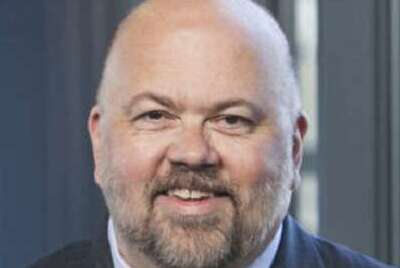A lot is changing in the way the government does human resources
Modernizing how the government conducts human resources, that's the subject of a lot of modernization effort.
Modernizing how the government conducts human resources, that’s the subject of a lot of modernization effort. A case in point: The Human Resources Quality Services Management Office recently launched at the Office of Personnel Management. My next guest says OPM and the QSMO have become an information hub for the several agencies trying to modernize their HR processes. Steve Krauss is senior Advisor to OPM’s HR Quality Services Management Office, and he joined the Federal Drive with Tom Temin earlier to discuss.
Interview Transcript:
Tom Temin And what are you seeing I mean, a lot of agencies, a lot of them are talking about HR Modernization. And they mean, from what I’ve understood the basic processes of how you just do all the millions of myriad steps for getting people what they need in HR.
Steve Krauss there are a significant number of large-scale HR IT modern modernization efforts underway across most of the federal shared service providers, and a number of large agencies as well. And for the most part, these projects entail consolidating a set of fragmented or disparate systems into a more cohesive end to end HR system that can meet the needs of federal agencies and employees across the entire hire to retire lifecycle. So, what these agencies tend to be doing is moving to modern commercial cloud-based software as a service platforms. And there’s a significant degree of business process reengineering and change management that goes along with that.
Tom Temin Yes, they typically have older systems that were hand coded or custom coded for each agency. And it sounds like they’re finding that just the commercial cloud-based providers software as a service providers can provide that functionality with a little tweaking maybe for government, but checking on vacation time, checking on your raises or retirement levels, whatever that might be. That’s kind of universal.
Steve Krauss It’s a real mix, and kind of a menagerie in terms of what’s out there today. As an example, about 75% of civilian federal agencies use Oracle’s PeopleSoft as a core HR platform today. But in the older paradigm of IT system deployment, what that meant was buying the software and then customizing it in house. And that leads to all kinds of issues in terms of technical debt, and not being able to keep pace with changes in technology, in addition to which agencies have a whole slew of systems, some of which are custom built, some of which are commercial to handle various aspects of the human capital management lifecycle, and will be called the Human Capital Business Reference Model, which is all the human capital management functions that agencies perform. But the bottom line is yes, the set of commercial platforms that exist today and that agencies are looking to move to can handle more of those things in an integrated fashion. And that’s what agencies are trying to get to.
Tom Temin And what effect does that have on their infrastructure, because a lot of them are trying to modernize that in the way they handle data. At the same time, they’re trying to modernize the applications themselves.
Steve Krauss It has a whole slew of implications for infrastructure for a variety of reasons, not the least of which is that most of these systems operate in the cloud. So, they are consistent with what agencies are trying to do more broadly in terms of moving to cloud based infrastructure. But also, because these systems tend to be more integrated in nature, there’s less room for error. And for data integrity issues that crop up in interfaces between systems and data quality and the use of data to improve strategic human capital decision making is a core issue that OMB and the White House and agencies are very interested in. And so, moving to these new platforms, has significant positive implications to making that happen as well.
Tom Temin We’re speaking with Steve Krauss, senior adviser to the HR quality services management office at the Office of Personnel Management, and let’s talk about what OPM is doing in the QSMO trying to guide agencies in all of this. Tell us more.
Steve Krauss From an HR QSMO perspective, we do a couple of really significant things when it comes to helping agencies modernize. One thing is we serve as an advisor and a coordinator. So, you’ve got a number of agencies that are all sort of moving in the same direction. They’re all looking essentially at the same commercial platforms. So, they’re all kind of heading to relatively similar destinations. And we work among all of those agencies and with our counterparts at OMB to help coordinate this effort on a government wide basis. So, there are opportunities to either consolidate, collaborate or share solutions over the next several years that really have never existed in the federal government. And it’s a big task, but our primary objective is to help agencies do that and get to it to a better state along with that, the other thing that we’ve done is we’ve recently stood up the HR QSMO marketplace. Mind you, this is one of the fundamental aspects of what quality services management offices are supposed to do. The founding document for the QSMOs is an OMB memo M 1916 that launched these efforts. And the fundamental job of the QSMOs is to stand up these marketplaces. And so, we have just within the last couple of months, stood up version 1.0 of our HR QSMO marketplace, it’s publicly available on GSAs Acquisition Gateway, and it serves as a market research hub. It provides information about the various solutions that are available to agencies as they’re looking to modernize and upgrade their services. Today it includes the federal service providers, the shared service providers, and OPM. But we are also working to figure out how to onboard and incorporate commercial solutions into that marketplace.
Tom Temin Yes, there are alternatives to PeopleSoft now, and some of them are coming in. But you touched on something I wanted to follow up with. And that’s the idea of shared services. And for decades, there has been the interior Business Center and the National Finance Center that have had some HR services and payroll services. Where does the Shared Services ideal? If you will play into all of this? And is it possible for a single solution to serve many agencies?
Steve Krauss Well, it absolutely is. And the HR shared services marketplace is actually probably in some respects, the most mature shared services marketplace that we have with OPM and OMB is help and assistance. We consolidated the payroll provider marketplace some 20 years ago from 26, payroll providers down to four, one of the great success stories in terms of federal shared services. And today, just as you pointed out, the National Finance Center, interior Business Center, Treasury’s administrative resource center and a couple of others provide HR and payroll services to a variety of agencies across the government. And I would say that while there have been some ups and downs with regards to agencies’ desire to move to shared services, to shared service centers, per se, the role of shared services, I think is not going to shrink in the future, it’s going to grow. And it’s not just based on the economies of scale that shared services can provide. But increasingly, we’re seeing this in terms of economies of skill, there’s a real shortage of talent in terms of federal HR, federal HR talent, right HR specialists, and the HR departments that are out there to serve agencies and help them achieve their missions. And so, the more that we think about these shared service centers is like centers of excellence, that the more obvious it is how important this is going to be for agencies to achieve their missions in the future.
Tom Temin And you see the shared services providers themselves changing, for example, Interior has got these big cloud contracts, that they are almost cloud brokers. And that becomes the shared service rather than Interior mainframes so to speak.
Steve Krauss Yeah, that’s true. I mean, there’s opportunities to turn all kinds of things into shared services, right, the fact that agencies have similar needs, and once you have an entity, like the Interior Business Center, or the National Finance Center, you have the business model, quite frankly, and the infrastructure to be able to transact with various agencies and to get them the services that they need. Frankly, it doesn’t have to be limited to HR shared services.
Tom Temin Two questions in one. Who initiates an agency’s journey toward a modernized HR and where should they go first? Should they go to the GSA marketplace, or should they go to OPM.
Steve Krauss It kind of depends on where they are in the ecosystem. For a lot of agencies who are already currently customers of some of these shared service centers, their journey towards modernization has a lot to do with partnering closely, probably with their existing shared service center. But they can also go to the HR QSMO small marketplace now to see what options are available. Different shared service centers provide different services, and some agencies buy different services from different service centers. And so that is a viable option. We tend to be focusing a lot of our attention on some of the largest agencies and the shared service providers themselves because that accounts for probably 80 to 90% of the HR IT ecosystem that exists across the federal government. And at this point, for the most part, those agencies know that they should be coming to us for market intelligence, but also to ensure that they’re aligned with the standards and the strategies that OMB and OPM are deploying and we’re working hand in hand with most of those agencies today on their modernization projects.
Copyright © 2025 Federal News Network. All rights reserved. This website is not intended for users located within the European Economic Area.
Tom Temin is host of the Federal Drive and has been providing insight on federal technology and management issues for more than 30 years.
Follow @tteminWFED






